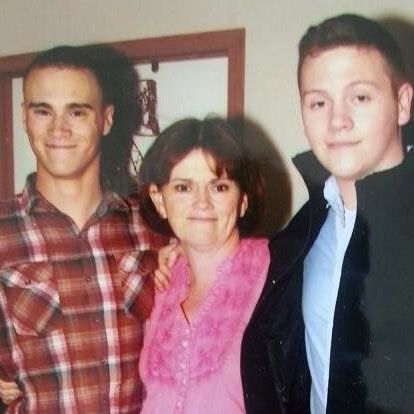When Vickie N. stepped on a stone while doing yard work in the summer of 2015, the last thing she was thinking about was her heart. And why would she? At age 48, she was healthier than she'd been in a long time — finding out she had type 2 diabetes had motivated her to become vigilant about diet and exercise.
"Over the last 10 years, I've lost about 160 pounds," she says. "I went from a size 22-24 to a size 10. So I really worked on myself, followed a healthy diet, and worked out on my elliptical machine and exercise bike a few times a week."
Vickie was an independent, on-the-go woman. She owned a hair salon where she worked between 10 and 12 hours a day. Instead of relaxing like many parents do when their kids leave the nest, when her 23- and 21-year-old sons left to join the Navy and Marines, respectively, the Texas native became a foster parent and started taking in children ages 5 and under.
On top of all that, she was also in the process of going through a divorce, so she had begun renovating a rental property for her and her foster children to move into in the near future.
Then Vickie stepped on that stone. She developed a sore on her left foot. At first it seemed to be healing, but after walking barefoot through steel rainwater on her porch, Vickie noticed swelling. She visited her doctor, who referred her to a podiatrist.
A (Scary) Blessing in Disguise
Vickie was given a shocking diagnosis. "The doctor took the bandage off my foot and said, 'You either go to the hospital to have surgery or you lose your leg — these are your options!'" she remembers. "The infection had gotten so bad within days that I was close to losing my leg from the knee down. I couldn't believe this was happening to me."
With no other choice, Vickie had surgery, where doctors removed half of her heel; however, when she woke up, she learned that her health crisis was far from over.
"I found out that I'd had a massive heart attack," she says. "My doctors couldn't believe I wasn't experiencing shortness of breath. Plus, I had a bone infection and still could be losing my leg."
Vickie's heart was pumping blood at roughly 5% — the average is around 55 to 60%. Her doctors struggled to find a cardiologist who was willing to work with someone whose heart was in such a weak state. During the waiting period, Vickie's sons were given clearance to fly home to see her.
"They were told it was a matter of life or death," she says tearfully. "It was amazing to see them because I didn't know if I'd ever see them again."
The Life-Saving Procedure
"Vickie's case was a little more complicated because she had bad blockages in all three arteries — she was in full heart failure," says Chad D. Christopherson, MD, chief of cardiology at Baptist Medical Center in San Antonio, Texas.
Her poor circulation was directly connected to her foot and leg problem. "She wasn't providing adequate blood supply to her foot to heal the wound," he explains. "The reason the fluid builds up is because the heart can't pump the blood around, and so it backs up into the lungs, the abdomen, and the legs."
Even though Vickie says she didn't notice any red flags, Dr. Christopherson isn't so sure. "We all do a very good job of explaining things away," he says.
A few of the common symptoms of heart failure include a decrease in your exercise ability — "I don't mean having a hard time running on a treadmill, I'm talking about noticing a significant change in walking from the car to the grocery store" — hands and feet feeling colder than usual, nausea for no reason, chest discomfort, and fluid retention.
"Because Vickie is a hairdresser, she assumed her ankles were swollen because she stands all day," he says. "She also assumed she was tired from not getting enough sleep."
Christopherson performed a Protected PCI procedure on Vickie, which uses a small pump (called the Impella pump) to temporarily push blood through your heart while stents (tiny tubes that open up blocked arteries) are inserted. "[It] was about a three-hour process and we put in six stents," Christopherson says.
Taking Her Life Lessons to Heart
Vickie was released from the hospital in mid-July 2015 and was back to work in early August. Today, her heart is functioning at 35%.
"Anything above 35% is when you're getting back into the normal prognosis," Christopherson explains.
Vickie's foot is on the mend and she's even lost a few more pounds — she now wears a size 6. "I was putting on weight, but now I know it was water weight from the swelling," she says.
She's also taking strides to reduce the stress in her life — and one way she's doing that is by sharing her story. "I'm learning to vocalize more," she says. "What I went through was life-changing — it made me stronger. I'm speaking up by letting people know what happened to me."
She encourages those closest to her to eat healthier, head to the gym, and make an appointment with a cardiologist to have a heart sonogram, regardless of their genetic background. "Diabetes runs in my family, but heart disease does not," Vickie says.
But most of all, she makes a point to appreciate opening her eyes every morning. "I'm feeling fantastic," she says. "I am so young and I have everything to live for. My boys need me, foster children need me, I have my mom, my brother, and more family, lots of friends, I have clients for 30 years. With everything I have endured the last few years, I am just so excited to live my everyday life!"















